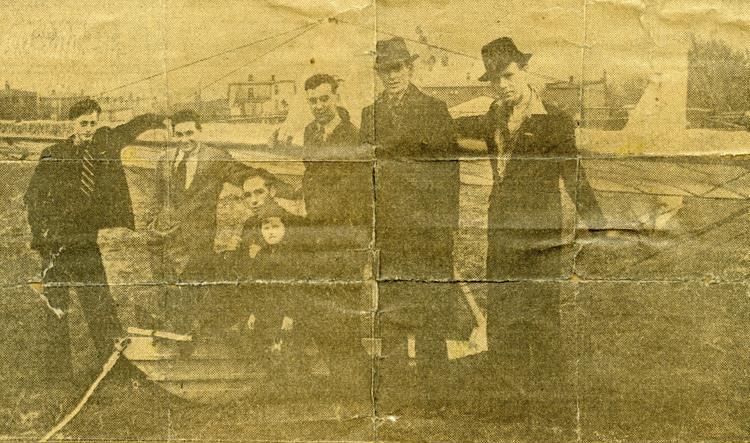ST. JOHN'S EVENING TELEGRAM, May 12, 1938

Newfoundland's first engineless, heavier-than-air craft, a Slingsby glider is pictured above together with members of the Newfoundland Aero Club--a group of air-minded your Newfoundlanders, who imported it. Seated at the controls of the glider is J. Hebbard, President of the Club, and the others in the picture are J. Mercer, Secretary, S. Mills, Treasurer, R. Yetman, H. Brownrigg and F. Noseworthy. The air-minded little fellow in the foreground is the son of Mr. H.R. Brookes.
With a wingspead of 33 feet and a length of 15 feet, the glider weighs just 180 pounds. It has identical control with an aeroplane-rudder bar and joystick--but, of course, has no fuselage or enclosing framework.
The component parts are the skid on the bottom, the seat at the front of the machine which is equipped with a safety belt, wings, and the elevators and rudder by which it is controlled.
The machine takes off from a height and is propelled into the air by means of a long elastic cable--the ring in the center of which drops clear of the hook on the nose of the glider as soon as it leaves the ground. This type of glider has a cruising speed of about seventy-five miles an hour, but it can land at the remarkable slow speed of from eight to ten m.p.h. It receives its momentum from air currents.
The wood in the glider is a special light three-ply aircraft veneer and the wings and rudder are covered with a treated fabric. All unnecessary framework and accessories have been elinimated in the cause of lightness.
The glider is housed in a hangar, which has been constructed at Lester's Field. The fabric covering the rudder was torn in shipping from England and this prevented a trial flight being made yesterday. However, as soon as repairs have been made within the next few days, the first glider should take to the air in Newfoundland. Happy landings!

